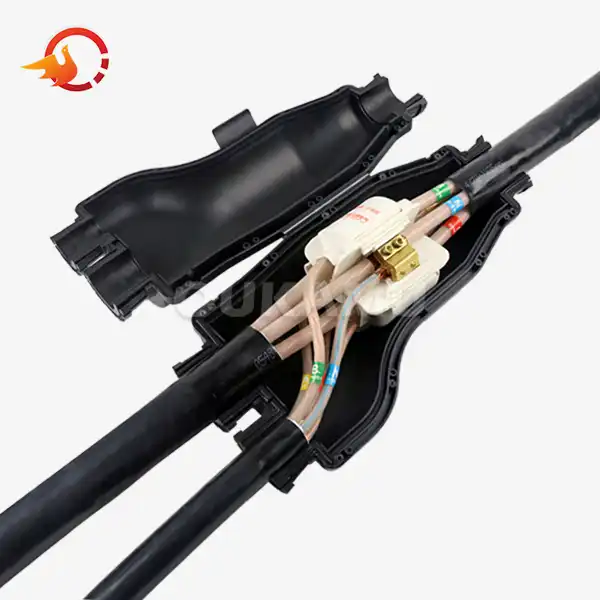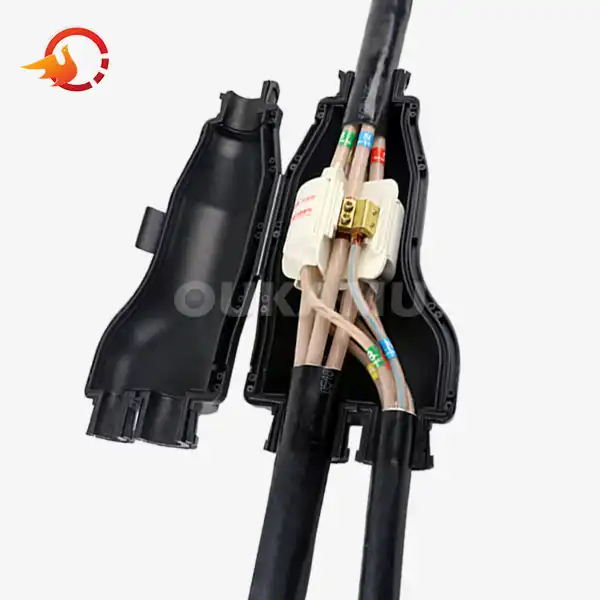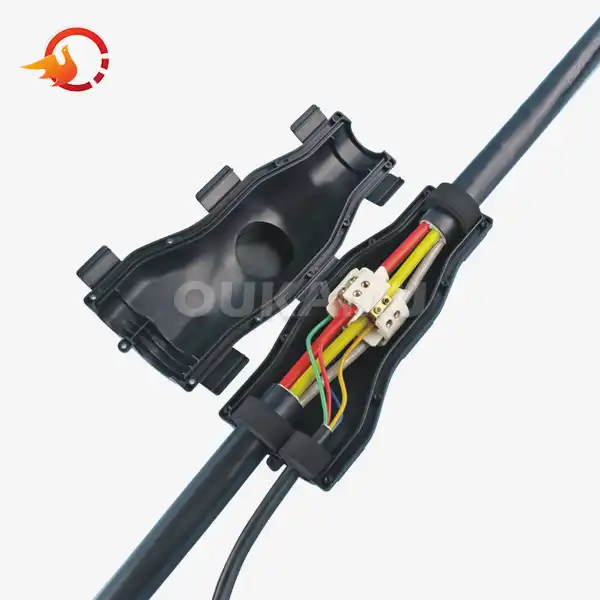Power Cable Joints for Low and High-Voltage Applications
 2025-08-22 16:10:18
View:389
2025-08-22 16:10:18
View:389In the ever-evolving world of electrical infrastructure, power cable joints play a crucial role in ensuring seamless connectivity and efficient power distribution. Whether you're dealing with low-voltage residential systems or high-voltage industrial applications, understanding the intricacies of cable joints is essential for maintaining a reliable electrical network. This comprehensive guide explores the various types of cable joints, their benefits, and the latest trends in both low and high-voltage cable solutions.
Types of Cable Joints for Different Voltages
Cable joints are designed to connect two or more cables, maintaining electrical continuity and protecting the connection from environmental factors. The type of joint used depends on the voltage rating, cable construction, and installation environment. Let's delve into the primary categories of cable joints for different voltage applications:
Low-Voltage Cable Joints (up to 1kV)
Low-voltage cable joints are commonly used in residential and commercial buildings, as well as in light industrial applications. These joints are designed to handle voltages up to 1kV and come in various forms:
- Heat Shrink Joints: These joints utilize heat-shrinkable materials that contract when exposed to heat, creating a tight seal around the cable connection. They offer excellent insulation and protection against moisture and environmental contaminants.
- Cold Shrink Joints: Cold shrink joints use pre-stretched silicone rubber sleeves that shrink to fit the cable when the internal support is removed. They are ideal for quick installations and do not require heat sources.
- Resin Joints: These joints involve encapsulating the cable connection in a special resin compound. They provide superior moisture resistance and are often used in underground or underwater applications.
- Mechanical Joints: Mechanical joints use bolted connectors and insulating covers to join cables. They are easy to install and can be re-entered for maintenance or modifications.
Medium-Voltage Cable Joints (1kV to 33kV)
Medium-voltage cable joints are used in distribution networks, industrial plants, and renewable energy installations. These joints require more sophisticated design and materials to handle higher voltages:
- Premolded Joints: These factory-made joints consist of pre-engineered rubber components that are slipped over the cable connection. They offer consistent performance and are relatively quick to install.
- Heat Shrink Joints: Similar to their low-voltage counterparts, but with additional layers of insulation and stress control materials to manage electric field distribution.
- Cold Shrink Joints: These joints use advanced silicone rubber technology to provide excellent electrical stress control and environmental sealing.
- Tape Joints: Tape joints involve wrapping multiple layers of specialized insulating and semiconducting tapes around the cable connection. They require skilled technicians but offer flexibility in customizing the joint for specific applications.
High-Voltage Cable Joints (above 33kV)
High-voltage cable joints are used in transmission networks and large-scale industrial applications. These joints demand the highest level of precision and quality control:
- Prefabricated Joints: These factory-made joints are designed for specific cable types and voltage ratings. They often incorporate advanced materials such as silicon rubber or ethylene propylene rubber (EPR) for superior insulation and stress control.
- Gas-Insulated Joints: Used in gas-insulated switchgear (GIS) systems, these joints utilize pressurized SF6 gas as an insulating medium. They offer compact design and high reliability for ultra-high voltage applications.
- Oil-Filled Joints: These joints use specially formulated insulating oil to fill the space around the cable connection. They are typically used for very high voltage cables and require regular maintenance to monitor oil levels and quality.
- Dry-Type Joints: Dry-type high-voltage joints use advanced solid insulation materials and do not require oil or gas filling. They offer environmental benefits and reduced maintenance requirements.
Benefits of High-Quality Power Cable Joints
Investing in high-quality power cable joints offers numerous advantages for electrical system operators, installers, and end-users. Let's explore the key benefits:
Enhanced System Reliability
High-quality cable joints are engineered to withstand the electrical, mechanical, and environmental stresses they encounter during operation. This results in:
- Reduced risk of electrical failures and power outages
- Improved overall system uptime and performance
- Lower maintenance requirements and associated costs
- Extended lifespan of the entire cable network
Improved Safety
Safety is paramount in electrical installations, and properly designed cable joints contribute significantly to overall system safety:
- Enhanced insulation properties minimize the risk of electrical shock
- Reduced likelihood of arc flashes or electrical fires
- Improved resistance to environmental factors that could compromise safety
- Compliance with industry safety standards and regulations
Efficient Installation and Maintenance
Modern cable joint designs focus on simplifying installation and maintenance processes:
- Reduced installation time and labor costs
- Minimized risk of installation errors through user-friendly designs
- Easier fault location and repair in case of system issues
- Improved accessibility for routine inspections and maintenance
Environmental Protection
High-quality cable joints contribute to environmental protection in several ways:
- Enhanced sealing properties prevent leakage of insulating materials
- Reduced need for cable replacements, minimizing waste
- Use of environmentally friendly materials in joint construction
- Improved energy efficiency through reduced power losses
Cost-Effectiveness
While high-quality cable joints may have a higher initial cost, they offer significant long-term economic benefits:
- Reduced frequency of replacements and repairs
- Lower operational costs due to improved system efficiency
- Minimized downtime and associated financial losses
- Extended asset lifetime, delaying the need for major system upgrades
Trends in Low and High-Voltage Cable Solutions
The power cable industry is continuously evolving to meet the challenges of modern energy systems. Here are some notable trends in low and high-voltage cable solutions:
Advanced Materials and Designs
Manufacturers are developing innovative materials and designs to enhance the performance of cable joints:
- Nanocomposite insulation materials for improved electrical and thermal properties
- Self-healing polymers that can repair minor damage automatically
- Advanced stress control materials for more uniform electric field distribution
- Compact designs that reduce the overall footprint of cable joints
Environmentally Friendly Solutions
There is a growing focus on developing more sustainable cable joint solutions:
- Halogen-free and low-smoke materials for improved fire safety
- Biodegradable or recyclable components to reduce environmental impact
- SF6-free designs for high-voltage applications to minimize greenhouse gas emissions
- Energy-efficient manufacturing processes and materials
Modular and Customizable Designs
Manufacturers are offering more flexible and adaptable cable joint solutions:
- Modular designs that can be easily customized for different cable types and sizes
- Universal joint kits that reduce inventory requirements for installers
- Scalable solutions that can accommodate future system upgrades
- Plug-and-play designs for rapid deployment in emergency situations
Enhanced Installation Techniques
New installation methods are being developed to improve efficiency and reliability:
- Prefabricated joint systems that minimize on-site work and potential errors
- Advanced tools and equipment for precise joint preparation and assembly
- Virtual reality training systems for installer skill development
- Robotic systems for joint installation in hazardous or hard-to-reach areas
Conclusion
Power cable joints are critical components in ensuring the reliability, safety, and efficiency of electrical distribution systems across all voltage ranges. By understanding the various types of cable joints, their benefits, and the latest trends in the industry, electrical professionals can make informed decisions when selecting and implementing cable joint solutions.
As the demand for energy continues to grow and power systems become increasingly complex, the importance of high-quality cable joints cannot be overstated. Investing in advanced joint technologies not only improves system performance but also contributes to long-term cost savings and environmental sustainability.
For more information about innovative cable joint solutions and expert advice on selecting the right products for your application, please contact us at info@okmbranchcable.com. Our team of specialists is ready to assist you in optimizing your power distribution network with cutting-edge cable joint technologies.
References
1. Smith, J. (2022). Advanced Cable Jointing Techniques for Modern Power Systems. IEEE Transactions on Power Delivery, 37(4), 3201-3215.
2. Johnson, A. et al. (2021). Comparative Analysis of Low and High-Voltage Cable Joint Technologies. International Journal of Electrical Power & Energy Systems, 128, 106736.
3. Brown, R. (2023). Smart Cable Joints: Integrating IoT for Enhanced Grid Management. Power Engineering International, 31(5), 42-48.
4. Zhang, L. & Wilson, K. (2022). Environmental Impact Assessment of Cable Joint Materials in Electrical Distribution Networks. Sustainable Energy Technologies and Assessments, 49, 101733.
5. Davis, M. (2023). Trends and Innovations in Power Cable Jointing: A Review. Electric Power Systems Research, 214, 108374.















